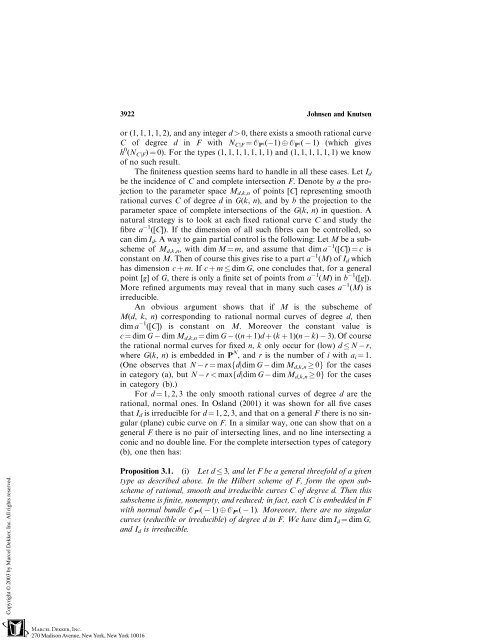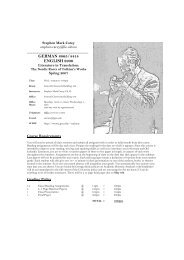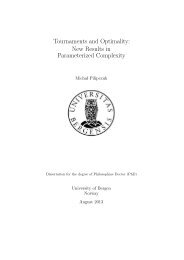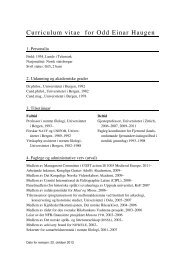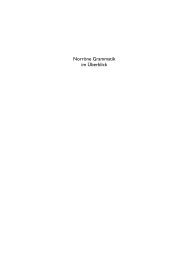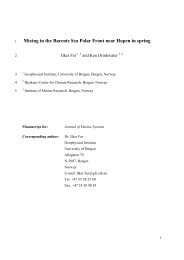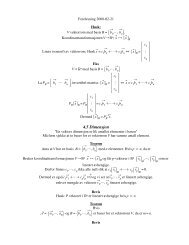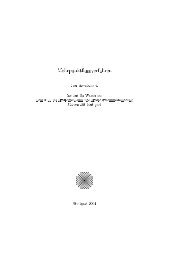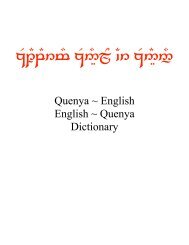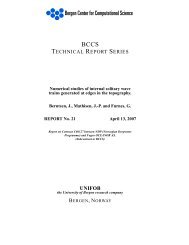Rational Curves in Calabi-Yau Threefolds
Rational Curves in Calabi-Yau Threefolds
Rational Curves in Calabi-Yau Threefolds
You also want an ePaper? Increase the reach of your titles
YUMPU automatically turns print PDFs into web optimized ePapers that Google loves.
3922 Johnsen and Knutsen<br />
or (1, 1, 1, 1, 2), and any <strong>in</strong>teger d > 0, there exists a smooth rational curve<br />
C of degree d <strong>in</strong> F with NCjF ¼ OP1( 1) OP1( 1) (which gives<br />
h 0 (NCjF) ¼ 0). For the types (1, 1, 1, 1, 1, 1, 1) and (1, 1, 1, 1, 1, 1) we know<br />
of no such result.<br />
The f<strong>in</strong>iteness question seems hard to handle <strong>in</strong> all these cases. Let Id be the <strong>in</strong>cidence of C and complete <strong>in</strong>tersection F. Denote by a the projection<br />
to the parameter space Md,k,n of po<strong>in</strong>ts [C] represent<strong>in</strong>g smooth<br />
rational curves C of degree d <strong>in</strong> G(k, n), and by b the projection to the<br />
parameter space of complete <strong>in</strong>tersections of the G(k, n) <strong>in</strong> question. A<br />
natural strategy is to look at each fixed rational curve C and study the<br />
fibre a 1 ([C]). If the dimension of all such fibres can be controlled, so<br />
can dim Id. A way to ga<strong>in</strong> partial control is the follow<strong>in</strong>g: Let M be a subscheme<br />
of Md,k,n, with dim M ¼ m, and assume that dim a 1 ([C]) ¼ c is<br />
constant on M. Then of course this gives rise to a part a 1 (M) ofIdwhich has dimension c þ m. Ifcþm dim G, one concludes that, for a general<br />
po<strong>in</strong>t [g] ofG, there is only a f<strong>in</strong>ite set of po<strong>in</strong>ts from a 1 (M) <strong>in</strong>b 1 ([g]).<br />
More ref<strong>in</strong>ed arguments may reveal that <strong>in</strong> many such cases a 1 (M) is<br />
irreducible.<br />
An obvious argument shows that if M is the subscheme of<br />
M(d, k, n) correspond<strong>in</strong>g to rational normal curves of degree d, then<br />
dim a 1 ([C]) is constant on M. Moreover the constant value is<br />
c ¼ dim G dim Md,k,n ¼ dim G ((n þ 1)d þ (k þ 1)(n k) 3). Of course<br />
the rational normal curves for fixed n, k only occur for (low) d N r,<br />
where G(k, n) is embedded <strong>in</strong> P N ,andris the number of i with ai ¼ 1.<br />
(One observes that N r ¼ maxfdjdim G dim Md,k,n 0g for the cases<br />
<strong>in</strong> category (a), but N r < maxfdjdim G dim Md,k,n 0g for the cases<br />
<strong>in</strong> category (b).)<br />
For d ¼ 1, 2, 3 the only smooth rational curves of degree d are the<br />
rational, normal ones. In Osland (2001) it was shown for all five cases<br />
that Id is irreducible for d ¼ 1, 2, 3, and that on a general F there is no s<strong>in</strong>gular<br />
(plane) cubic curve on F. In a similar way, one can show that on a<br />
general F there is no pair of <strong>in</strong>tersect<strong>in</strong>g l<strong>in</strong>es, and no l<strong>in</strong>e <strong>in</strong>tersect<strong>in</strong>g a<br />
conic and no double l<strong>in</strong>e. For the complete <strong>in</strong>tersection types of category<br />
(b), one then has:<br />
Proposition 3.1. (i) Let d 3, and let F be a general threefold of a given<br />
type as described above. In the Hilbert scheme of F, form the open subscheme<br />
of rational, smooth and irreducible curves C of degree d. Then this<br />
subscheme is f<strong>in</strong>ite, nonempty, and reduced; <strong>in</strong> fact, each C is embedded <strong>in</strong> F<br />
with normal bundle OP1( 1) OP1( 1). Moreover, there are no s<strong>in</strong>gular<br />
curves (reducible or irreducible) of degree d <strong>in</strong> F. We have dim Id ¼ dim G,<br />
and Id is irreducible.


